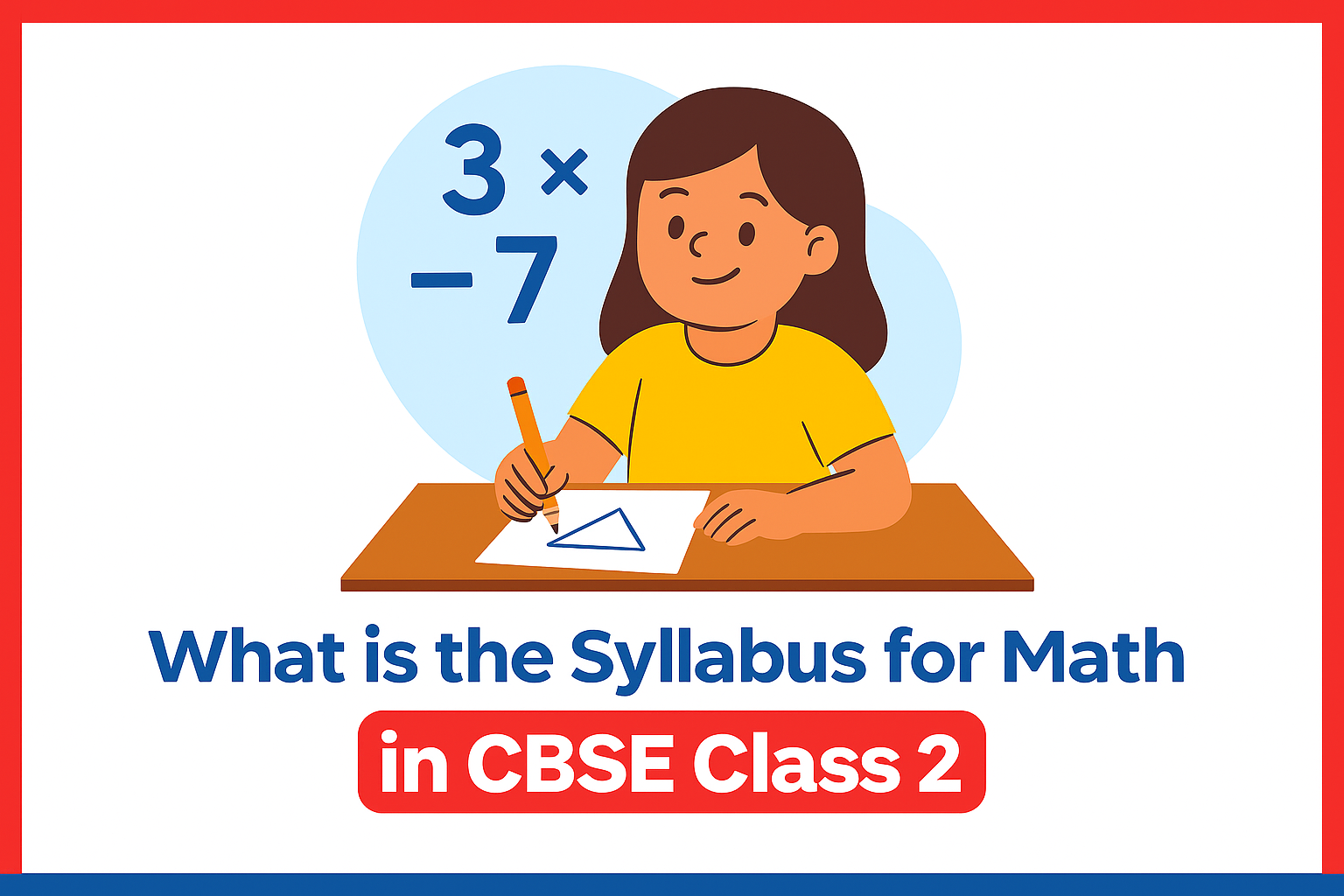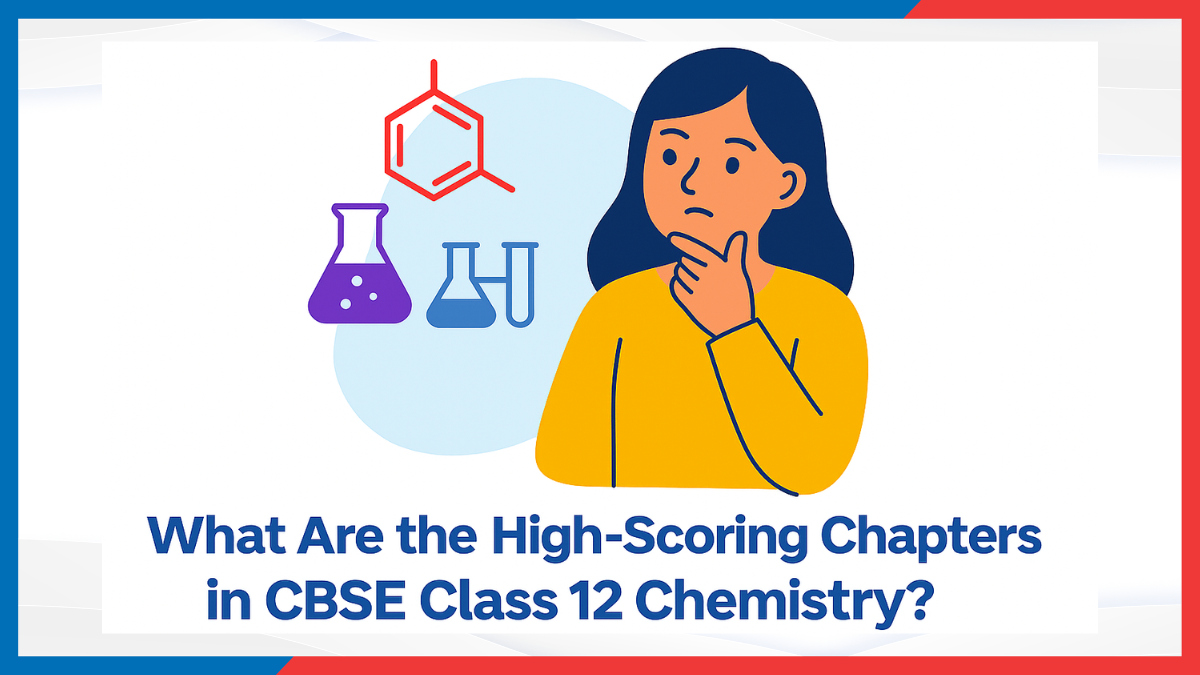Mathematics is the basis of logical reasoning and problem-solving skills in children. The Class 2 Maths syllabus by CBSE encourages young learners to explore numbers, shapes, patterns, and see how math is used in real life. At this stage of cognitive development, it helps ensure that children learn calculations while also developing reasoning skills. If you are a parent or teacher, having a good sense of the syllabus will help you effectively guide your child or students in learning. In this blog, we will explore the detailed Math syllabus for CBSE Class 2, what skills it targets, systematize the syllabus, and provide FAQs.
Why is Mathematics important for Class 2?
Mathematics at the Class 2 level is not simply about learning formulas, but about investigating concepts through engaging and interactive experiences. Children begin to recognize numbers, quantities, measure, and connect their mathematical understanding to their own lives.
The focus of the syllabus is to:
-
Reinforce their number sense
-
Introduce some basic geometry.
-
Develop measuring and data handling skills.
-
Encourage deductive reasoning through patterns and puzzles.
Use the class 2 workbookclass 2 workbook to also assist with practice and some revision at home with the prescribed syllabus.
Objectives of CBSE Class 2 Maths
The CBSE Class 2 Maths curriculum is organized clearly and there are objectives for reaching desired learning outcomes:
1. Numbers:
Students will experience counting numbers until 1000 and will do addition and subtraction of small ones.
2. Basic Multiplication and Division:
The basic multiplication tables and the methods of division will be introduced to students.
3. Geometry and Spatial Understanding:
Students learn about shapes, sizes, directions, and patterns.
4. Measurement:
Students will be introduced to length, weight, capacity, and time in real-life situations.
5. Handling Data:
Students will be able to read and interpret data in simple charts and pictographs.
Students will be able to solve word problems and have the opportunity to use Maths in real life applications.
It is often acceptable to purchase one Class 2 book approved by CBSE Publisher’s for the completion of the curriculum, however children retain content better when practice is thorough and engaging.
CBSE Class 2 Maths Syllabus – Detailed Breakdown
Here’s a unit-wise breakdown of the CBSE syllabus for Class 2 Mathematics:
|
Unit |
Topics Covered |
Key Skills Developed |
|---|---|---|
|
Numbers |
Counting up to 1000, number names, place value, ascending/descending order |
Number recognition, sequencing |
|
Addition & Subtraction |
Addition with and without carryover, subtraction with and without borrowing, word problems |
Problem-solving, basic arithmetic |
|
Multiplication |
Introduction to multiplication as repeated addition, tables (2 to 10) |
Concept building, fast calculation |
|
Division |
Introduction to division as repeated subtraction, equal sharing, simple division facts |
Logical reasoning, equal distribution |
|
Geometry |
Identifying 2D and 3D shapes, symmetry, patterns, directions |
Spatial understanding, visualization |
|
Data Handling |
Reading pictographs, simple tables |
Analytical thinking |
|
Patterns & Logical Thinking |
Number patterns, odd/even numbers, simple puzzles |
Reasoning, pattern recognition |
This comprehensive approach in the CBSE Class 2 Maths book makes the subject engaging and helps children relate concepts with their surroundings.
CBSE Class 2 Math Syllabus Overview
The CBSE Class 2 Math syllabus aims to strengthen students' basic arithmetic skills while having fun practically. The syllabus includes topics such as numbers up to 1000, place value, addition, subtraction, multiplication, or division with simple problems. Measurement of length, weight, time, and money; basic geometry concepts like shapes and patterns; and an introduction to data handling through pictographs are also taught. Through word problems and real-life instances, the objective is to cultivate the abilities of problem-solving and logical thinking among students. A good structured syllabus further imparts a smooth foundation for higher classes where the students can nurture curiosity and confidence in mathematics.
Read More: What Is the Minimum Age for Class 2 in CBSE?
Teaching & Learning Approach
The teaching approach for Class 2 Mathematics emphasizes activities, examples, and practical learning. Some of the techniques are:
• Hands-On Learning: Using coins, sticks, or toys to illustrate addition, subtraction, and division.
• Story-Based Word Problems: Letting the children apply the concept in a real-life scenario.
• Games & Puzzles: Offering riddles and math puzzles for better logical thinking.
• Visual Aids: Charts, pictographs, and flashcards to ease the study of complex abstract concepts.
Parents and teachers are encouraged to let children study from a class 2 workbook, which has exercises related to the syllabus.
Skills Children Gain from Class 2 Mathematics
1. Numerical Fluency: Ability to handle numbers up to 1000.
2. Arithmetic Skills: Properly using the four basic operations.
3. Time & Money Management: Being able to read the clock and dealing with money.
4. Logical Reasoning: Enriched via puzzles and problem solving.
5. Spatial Awareness: Awareness of directions, shapes, and patterns.
6. Analytical Skills: Introduction to handling and interpretation of data.
Sample Study Plan for Class 2 Maths
A balanced study plan ensures consistent learning:
-
Daily Practice (20–30 mins): Focus on numbers, tables, and word problems.
-
Weekly Revision: Practice one unit thoroughly using examples.
-
Monthly Tests: Small quizzes or mock tests to check progress.
-
Activity Time: Use real-life examples like shopping, cooking, or traveling to apply math.
This approach keeps children motivated and confident.
Conclusion
The CBSE Class 2 Maths syllabus lays the foundation for higher-level mathematics through an emphasis on numbers, operations, geometry, measurement, and reasoning. The curriculum is thoughtfully designed to allow for learning alongside applications in real life and childhood enjoyment in grasping the concept.
Using Class 2 Maths books together with other extra practice in the workbook is the way Class 2 students can surely sharpen their skills and achieve academic excellence. Parents and teachers can inculcate in the students values and discipline for constant practicing, learning through doing, and solving application-based problems.
Class 2 Maths is not just about solving sums; it is all about preparing logical minds and arming children with confidence to face new challenges.
FAQs on CBSE Class 2 Maths Syllabus
Q1. How many chapters are there in CBSE Class 2 Maths?
Most CBSE Class 2 Maths books have around 12–14 chapters, relating to numbers, operations, geometry, measurement, data handling, and patterns.
Q2. Does Class 2 syllabus contain multiplication tables?
Yes, students will be introduced to multiplication tables up to 10.
Q3. How can parents help children in Class 2 Maths?
Parents can encourage regular practice, use real-life examples like shopping to teach money, and revise concepts through a class 2 workbook.
Q4. Does the syllabus include word problems?
Yes, simple word problems based on addition, subtraction, multiplication, and division are included.
Q5. Which is the best way to prepare for exams?
Regular revision from a class 2 book, solving practice exercises, and mock tests are the best ways to prepare.












